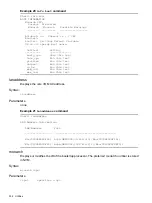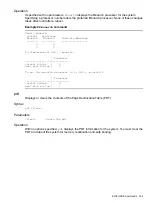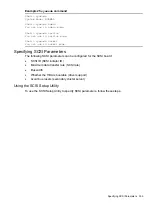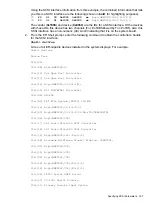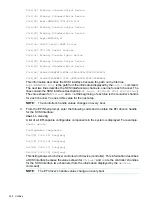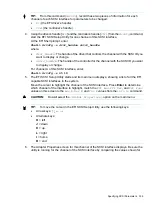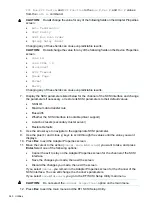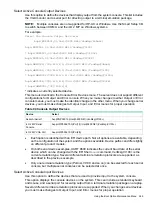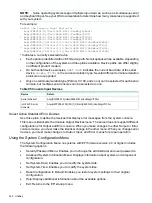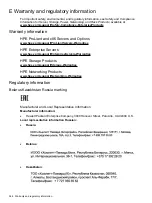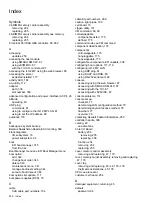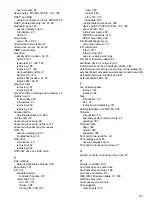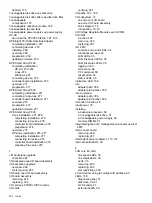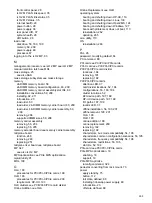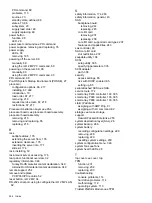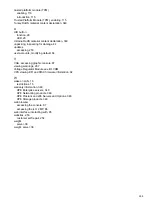
NOTE:
Some operating systems support multiple input devices, such as a simultaneous serial
and keyboard input. See your OS documentation to determine how many consoles are supported
with your system.
For example:
Select the Console Input Device(s)
Acpi(PNP0501,0)/Uart(9600 N81)/VenMsg(PcAnsi)
Acpi(PNP0501,0)/Uart(9600 N81)/VenMsg(Vt100)
* Acpi(PNP0501,0)/Uart(9600 N81)/VenMsg(Vt100+)
Acpi(PNP0501,0)/Uart(9600 N81)/VenMsg(VtUtf8)
Acpi(HWP0002,700)/Pci(1|1)/Uart(9600 N81)/VenMsg(PcAnsi)
Acpi(HWP0002,700)/Pci(1|1)/Uart(9600 N81)/VenMsg(Vt100)
* Acpi(HWP0002,700)/Pci(1|1)/Uart(9600 N81)/VenMsg(Vt100+)
Acpi(HWP0002,700)/Pci(1|1)/Uart(9600 N81)/VenMsg(VtUtf8)
* Indicates a currently selected device.
•
Each option is identified with an EFI Device path. Not all options will be available, depending
on the configuration of the system and the options available. Device paths can differ slightly
on different product models.
•
On both serial device examples,
UART 9600
indicates the current baud rate of the serial
device,
VenMsg Vt100+
is the current emulation type. Several different terminal emulation
protocols are supported.
•
Only one terminal emulation type (PcAnsi, Vt100, and so on) can be selected for each serial
console, but multiple serial consoles can be selected at once.
Table 95 Console Input Devices
Select
Device
Acpi(PNP0501,0)/Uart(9600 N81)/VenMsg(Vt100+)
Serial A/Serial 1
Acpi(HWP0002,700)/Pci(1|1)/Uart(9600 N81)/VenMsg(Vt100+)
iLO 2 MP Serial
Console
Select Active Standard Error Devices
Use this option to define the devices that display error messages from the system console.
This menu is identical to the Console Output Devices menu. The server does not support different
configurations for Output and Error console. When you make changes to either Output or Error
console menus, you must make the identical change in the other menu. When you change serial
devices, you must make changes to Output, Input, and Error menus for proper operation
Using the System Configuration Menu
The System Configuration Menu on systems with EFI firmware version 2.0 or higher includes
the following options:
•
Security/Password Menu: Enables you to change the administrator and user passwords.
•
Advanced System Information Menu: Displays information about system and component
configuration.
•
Set System Date: Enables you to modify the system date.
•
Set System Time: Enables you to modify the system time.
•
Reset Configuration to Default: Enables you restore system settings to their original
configuration.
•
Help: Displays additional information about the available options.
•
Exit: Returns to the EFI startup menu.
346
Utilities

